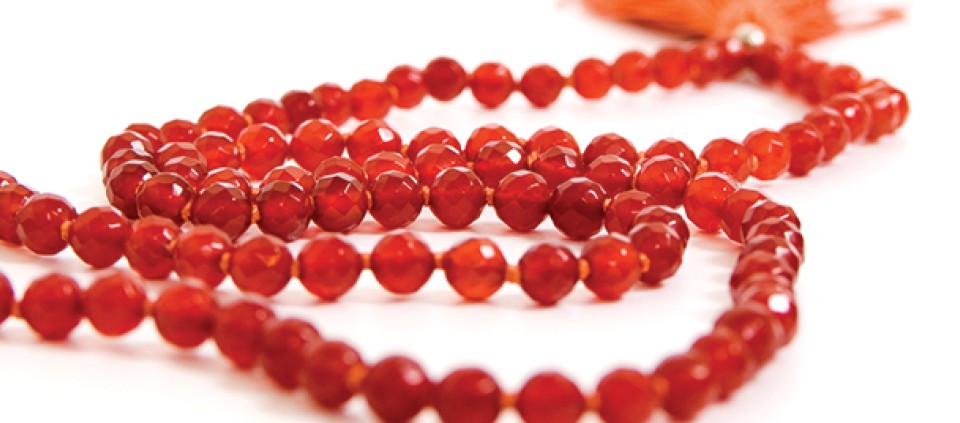Malas: The Power of 108

by Janet Arnold-Grych
The mala I hold in my hand connects me to a lineage of seekers who held one in theirs. Malas are aligned to the Vedic tradition and thought to originate around 800 BCE.
In the sixth century BCE, the use of malas was promoted by no less than the Buddha. It’s said that a king asked the Buddha to encapsulate his teachings so the king could practice and pass them on while attending to his many earthly duties. The Buddha instructed him to make a loop of 108 bodhi seeds and recite, “I take refuge in the Buddha. I take refuge in the dharma. I take refuge in the sangha (community).”
It’s no wonder that malas are used in many different cultures—there’s something comforting and yet uplifting about holding them. While the beads serve as a practical aid for counting repetitions of one’s mantra, wish, or prayer, they also function like a prism, helping the user to focus intention. Holding one bead and one thought feels very purposeful. The mind’s incessant chatter is left behind.
A friend recently showed me how to make malas. Each has 108 beads and a larger bead, known as a guru, which is said to hold the energy generated during the mala practice. Curious about the significance of 108, I did some digging. The number 108 is auspicious. In fact, 108 is sometimes described as the numerical equivalent of om. Here are a few points of convergence:
- The average distance from the sun to the earth, and the moon to the earth, is 108 times their respective diameters.
- The dance of Shiva is said to have 108 poses.
- There are 54 letters in the Sanskrit alphabet and two variants of each—masculine and feminine.
- There are 108 marma points (intersections between the subtle and the physical body) in the body (at least according to some traditions).
- The heart chakra is the convergence of 108 lines of energy.
The overriding theme suggests that 108 describes the interrelationship between the inner and outer environments—and by thoughtfully moving through the beads on a mala, we connect to a greater whole. When I’m making a mala for someone, I try to eliminate all distraction and repeat a specific wish or blessing with each knot. The knot thus becomes a holder of my intention and the making of the mala becomes a practice in itself.
Malas represent a tradition of aligning intention and focus, stillness and wisdom. There is a reason their use has been carried through the centuries. Whether I’m sitting with a mala, or mindfully constructing one, I feel this potential in the beads in my hand.
Janet Arnold-Grych is a yoga teacher and writer whose work has been published in Elephant Journal, Huffington Post, Third Coast Digest, and other outlets.